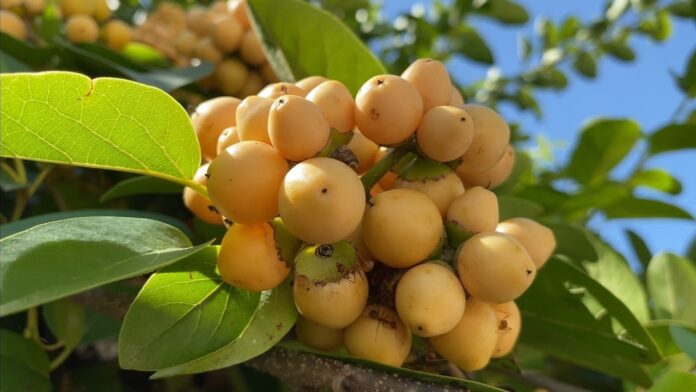Nance Fruit (Byrsonima crassifolia) is a small, round fruit native to tropical regions in the Americas, particularly from Mexico to Brazil. Known for its unique flavor and nutritional benefits, the nance fruit comes in shades of yellow to orange when ripe.
Interesting Facts About Nance Fruit:
- Origin and Distribution: Nance fruit (Byrsonima crassifolia) hails from tropical regions of the Americas, flourishing in a wide range from Mexico to Bolivia and Brazil. This fruit has been integral to local ecosystems and traditions for centuries. It also grows in the Caribbean, where it’s a staple in local markets and recipes
- Appearance and Growth: The Nance tree, reaching up to 33 feet in height, can have either a tall, straight trunk or a shorter, crooked one. Its dark brown bark is rough and fissured, and the inner bark is notably pinkish. The tree’s leaves are ovate to elliptic, with a smooth texture and dense foliage, making it recognizable in the subtropical landscape
- Fruit Characteristics: Nance fruit is small, ranging from 0.8 to 1.5 centimeters in diameter, and comes in shades of orange or yellow. Its thin skin encloses a juicy, white pulp, which can be quite pungent. This strong aroma and unique flavor are polarizing, appreciated by some while deemed overpowering by others
- Rich Nutritional Profile: Packed with Vitamin C, a single serving provides over 100% of the daily recommended intake, aiding immune health and skin protection. It’s also rich in dietary fiber, which promotes digestion, and Vitamin E, which helps combat oxidative stress
- Strengthens the Immune System: With its rich Vitamin C content, Nance fruit not only enhances immune function but also aids in collagen production, which is vital for skin, tendon, and blood vessel health
- Promotes Bone and Skin Health: Nance fruit contains minerals like calcium and magnesium, crucial for strong bones. Its vitamins also protect the skin from sun damage and promote cell regeneration, making it a popular natural beauty remedy
- Aids in Weight Management: Because it’s low in calories and high in fiber, Nance fruit can create a feeling of fullness, which may help in reducing overall calorie consumption. This makes it a favorable fruit for weight loss diets
- Heart Health Benefits: Regular consumption of Nance fruit can improve heart health by managing cholesterol levels. It’s particularly effective at increasing HDL (good cholesterol) while reducing LDL (bad cholesterol)
- Potential Allergic Reactions: While nutritious, Nance fruit should be consumed cautiously as it may trigger allergic reactions or digestive discomfort in some people. Excessive intake can lead to adverse effects, highlighting the need for moderation
- Fermentation-Related Issues: Nance fruit is often used in making alcoholic beverages like chicha, which can carry risks if improperly fermented. In some cases, home-brewed chicha has been linked to contamination or negative health outcomes due to poor sanitary conditions during preparation.
